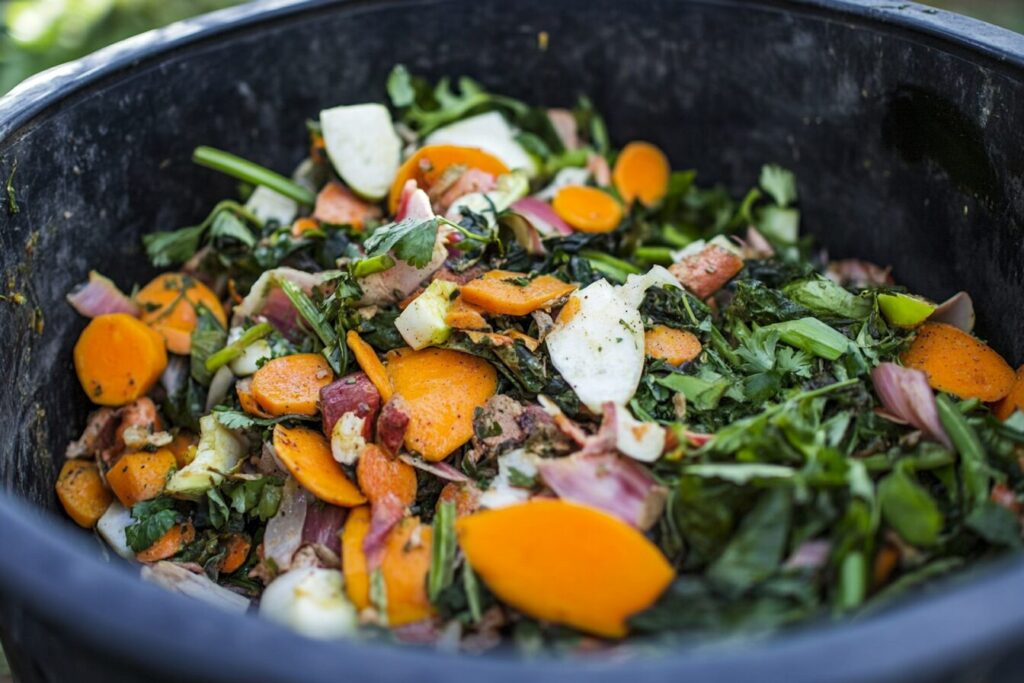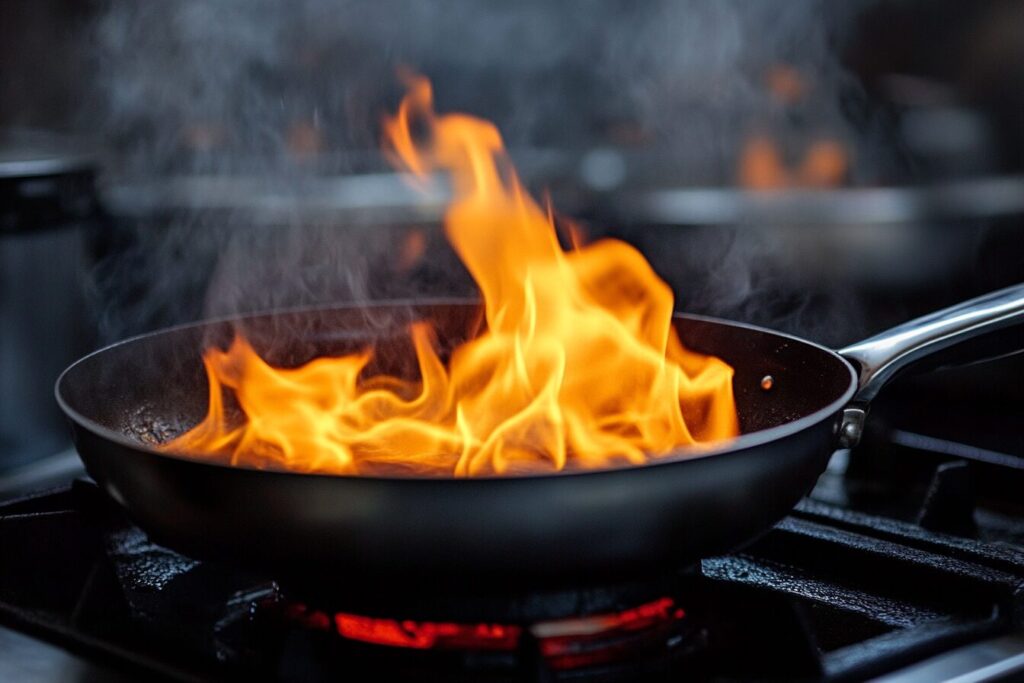If you’ve ever opened your fridge only to discover wilted lettuce, moldy strawberries, or leftovers that went untouched for days, you’re not alone. Food waste is a huge issue in households around the world—but the good news? It’s also one of the easiest places to make a difference. Zero-waste cooking is a practical, empowering way to stretch your grocery dollars while caring for the planet.
Whether you’re brand new to the idea or simply looking to up your game, these simple, actionable tips will help you save money, reduce waste, and cook more mindfully—without the overwhelm.
We are a participant in the Amazon Services LLC Associates Program, an affiliate advertising program designed to provide a means for us to earn fees by linking to Amazon.com and affiliated sites.
Start With What You Have
Before heading to the store, take stock of what’s already in your fridge, freezer, and pantry. Many meals can be created using just what’s on hand—an approach that not only reduces waste but also slashes your grocery bill.
For example, that half-empty bag of lentils and the sweet potatoes rolling around in your pantry can become a hearty lentil stew. Cooking meals based on existing ingredients is a cornerstone of affordable eating. If you’re building a $50 weekly meal plan or just trying to make smarter choices, this habit alone can save hundreds of dollars over time.
A magnetic meal planning board on your fridge can help you stay organized and avoid overbuying, while a dry erase list keeps your inventory visible. Planning meals around ingredients you already own is the first step toward a zero-waste kitchen.
Buy Smart, Shop Wisely
When it’s time to restock, shop with intention. Choose stores with bulk sections so you can buy only what you need—and bring your own containers when possible. Reusable mesh produce bags and glass storage jars are not only eco-friendly, but they also keep your kitchen looking tidy.
Shopping local—especially at farmers’ markets—often means fresher produce with less packaging. You’ll also find that many markets offer discounts on “imperfect” or surplus fruits and vegetables. These are perfect for soups, smoothies, or baking, and cost significantly less.
Learning how to grocery shop on a budget doesn’t mean you sacrifice quality. It simply requires a shift in focus: buy in-season produce, avoid individually wrapped items, and always bring a shopping list to cut down on impulse buys.
Master the Art of Food Storage
A lot of waste happens after food comes home from the store. The key to keeping food fresher longer? Proper storage.
Place herbs in a jar of water (like a bouquet), then loosely cover with a reusable silicone food bag. Use glass containers with airtight lids to store leftovers or prep ingredients for the week ahead.
Labeling leftovers with the date they were cooked helps reduce forgotten containers shoved to the back of the fridge. A set of reusable chalkboard labels and markers makes this both easy and visually appealing.
Knowing where to store food matters too. Leafy greens last longer in the crisper, while eggs and dairy should go on the bottom shelf—the coldest part of the fridge.
Use the Whole Vegetable
Instead of tossing scraps, look for ways to use every edible part of the plant. Carrot tops make an excellent pesto. Broccoli stems are fantastic when peeled, sliced, and stir-fried. Even the peels from potatoes, sweet potatoes, or beets can be crisped into snackable chips in the oven.
When you get in the habit of cooking this way, you’ll find that soups and stir-fries become a natural go-to. These meals are forgiving and adaptable—ideal when you’re working with odd bits from the fridge or small amounts of leftover meat or veggies.
In fact, learning to cook from scratch without getting overwhelmed starts here. One-pot meals, simple broths, and veggie-based dinners are easy to build using scraps and leftovers creatively.
Set Up an “Eat Me First” Zone
It’s easy for food to get forgotten at the back of the fridge. That’s why having an “Eat Me First” bin can be a game changer. Place a small basket on a prominent shelf and fill it with items that need to be used soon: opened yogurts, half-used veggies, or yesterday’s dinner.
This visual reminder helps prioritize aging ingredients before they spoil. It’s also a great tool when building those $50 meal plans—use what’s nearing the end of its life first, and build meals around it.
Make Friends With Your Freezer
When in doubt, freeze it! From browning bananas to leftover rice, your freezer is your best friend when it comes to waste reduction.
If you’re meal prepping for busy weekdays, batch-cooking a few staple dishes and freezing them in portion-sized freezer trays is incredibly convenient. Soups, cooked grains, sauces, and smoothie packs all freeze well.
Label everything clearly using freezer-safe bags, and keep a list of what’s inside your freezer to help you rotate items regularly. Check out our collection of freezer meals that actually taste good—even after weeks in the freezer.
Reinvent Your Leftovers
It’s easy to fall into the trap of thinking leftovers are boring, but with a little creativity, they can become something entirely new. Roasted veggies from last night’s dinner can be transformed into a breakfast omelet. That leftover chicken? It’s the perfect base for tacos or a hearty soup.
Get into the habit of cooking more than you need with the intention of remixing those ingredients later in the week. If you’re planning a week of make-ahead meals, leftovers can take on new life with minimal effort.
Having a high-quality blender on hand also helps—blitz cooked veggies into soups or sauces, or make smoothies from fruit that’s on its last leg.

Compost the Rest
Even the most efficient kitchen will have some waste—think onion skins, coffee grounds, and eggshells. Instead of tossing them in the trash, compost them.
A compact countertop compost bin is an easy way to collect scraps without mess or odor. If you don’t have a backyard compost pile, look for a community composting program or consider a small indoor composter to handle the rest.
We’ve also shared some easy DIY kitchen hacks that help you cut waste and save money.
Make Your Own Kitchen Staples
Another great way to reduce waste is by making pantry staples at home. This not only cuts down on packaging but often results in better-tasting, healthier food.
Try your hand at homemade salad dressings, granola, or nut milk. You don’t need fancy equipment either—just a basic nut milk bag and a blender will do the trick. Making your own yogurt using an Instant Pot or yogurt maker is easier than you think, and you can control what goes into it.
Make Simple Swaps in the Kitchen
Single-use plastics and disposables are a sneaky source of waste. The good news? Swapping them for reusable options is easy.
Start by switching to beeswax wraps instead of plastic wrap, silicone baking mats instead of parchment paper, and cloth napkins in place of paper towels. You’ll cut down on trash without sacrificing function or convenience.
When you stock your kitchen with frugal staples, you’re already halfway to building a low-waste lifestyle.
Track What You Toss
To truly understand your food waste habits, spend a week tracking what you throw away. Keep a small notepad on the counter or use a whiteboard on the fridge. Note every item you toss and why—was it forgotten? Did it spoil quickly? Was it overcooked?
You’ll start to notice patterns, and from there, you can adjust your shopping, cooking, and storage habits accordingly.
Create a Zero-Waste Recipe Binder
Finally, build a collection of your favorite go-to recipes that are perfect for zero-waste cooking. Keep a binder (or a digital folder) with recipes for:
- Vegetable scrap broth
- Stir-fries that work with any veggies
- Smoothies using ripe fruit
- Muffins made with overripe bananas
- One-pot meals for busy weeknights
These types of meals save time, money, and reduce stress—especially if you’re managing a busy household.
Use It All: Turn Kitchen Ingredients Into Natural Cleaners
Zero-waste cooking isn’t just about using every bit of food on your plate—it’s also about getting creative with what’s left behind. Believe it or not, your kitchen scraps and pantry staples can double as powerful, non-toxic cleaning agents. Instead of tossing them out, use them up—and clean your kitchen while you’re at it!
🍋 Citrus Peels → All-Purpose Cleaner
Save orange, lemon, and lime peels in a jar. Cover them with white vinegar and let the mixture sit for 1–2 weeks. Strain it, pour into a spray bottle, and you’ve got a homemade citrus cleaner that cuts grease and smells amazing.
🥔 Potato Water → Rust Remover
Boiled potatoes release starch into water, and that starchy water can be used to scrub away rust on cast iron pans or metal tools. Let it cool, then use a sponge or cloth to apply it to rusty surfaces.
🌿 Herb Stems → Fresh-Scented Scrub
Leftover rosemary, mint, or thyme stems can be blended with baking soda and a splash of vinegar to create a fresh-smelling scrub for sinks and stovetops.
🥒 Cucumber Ends → Mirror & Sink Polish
Rub the waxy end of a cucumber directly onto stainless steel or mirrors. It helps eliminate fog and gives a subtle shine—without any harsh chemicals.
🍞 Stale Bread → Surface Crumb Cleaner
Old bread works as a gentle crumb-grabber. Use it to wipe down wooden cutting boards or pick up broken glass shards safely.
Why It Matters
Making your own diy kitchen cleaners from kitchen scraps is an easy, eco-friendly way to reduce waste, save money, and avoid harmful chemicals in your home. It’s one more way zero-waste living starts right in your kitchen—by using what you already have.
The Bottom Line: Small Habits Add Up in Zero-Waste Cooking
You don’t have to overhaul your entire kitchen overnight to make an impact. Zero-waste cooking is a journey, not a destination. Start small. Pick one or two tips from this list to try this week.
Before you know it, your trash can will be emptier, your fridge more organized, and your wallet a little fuller. Plus, you’ll feel great knowing you’re doing your part to care for the planet—right from your own kitchen.



